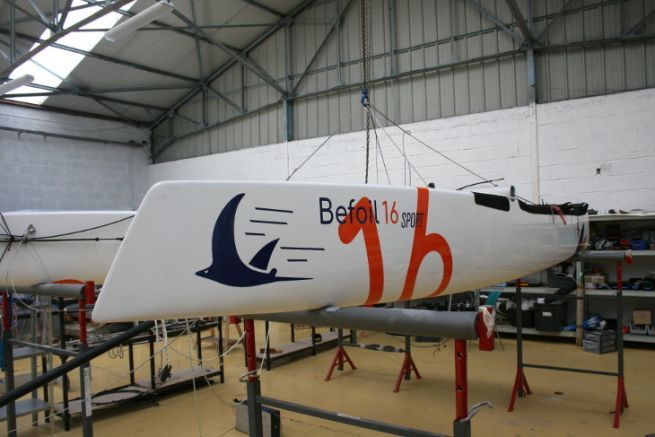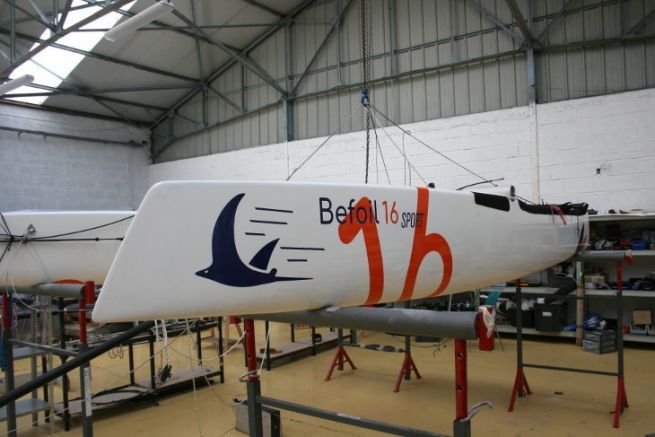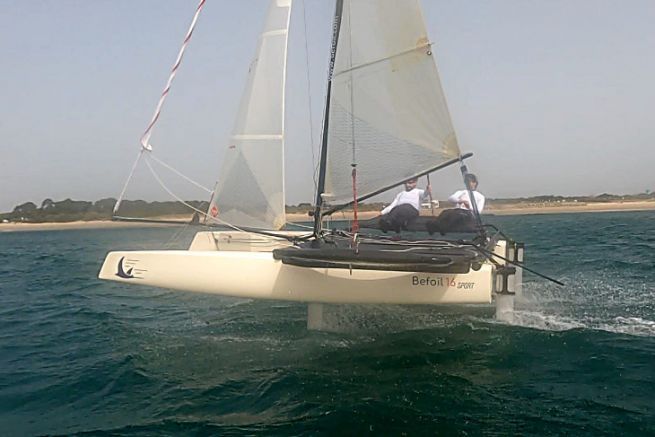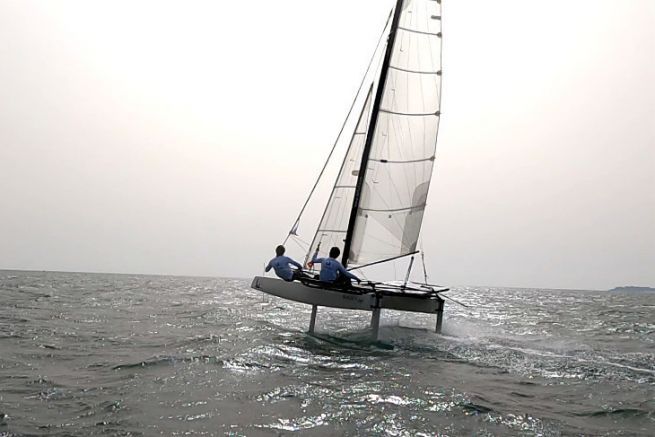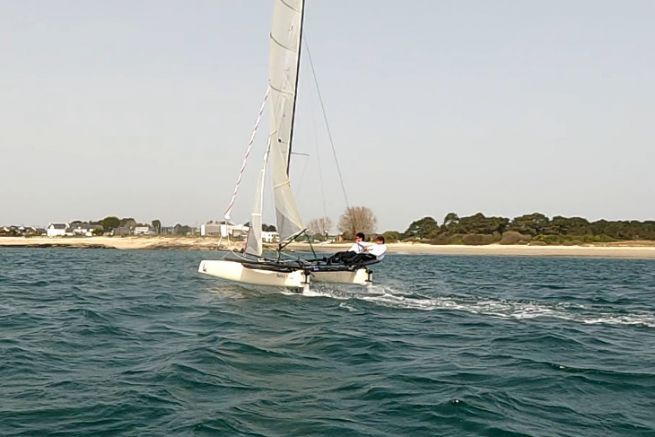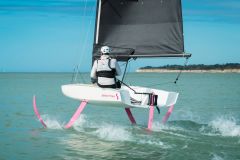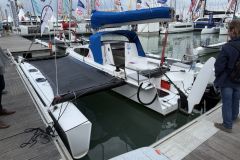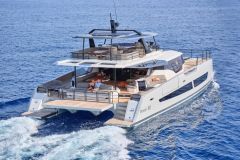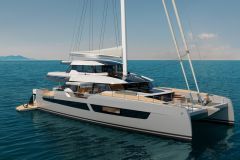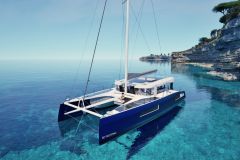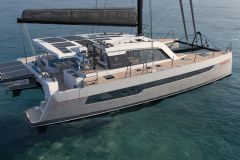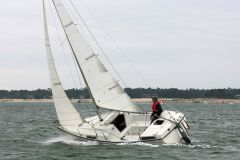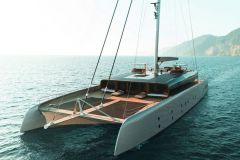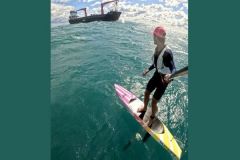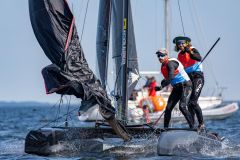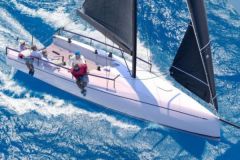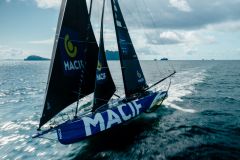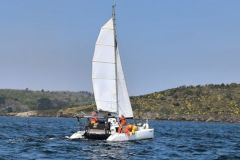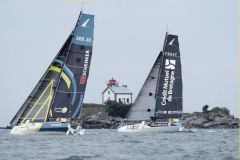Befoil 16 Sport : A light version in infusion
Second generation of the Befoil catamarans, the Befoil 16 Sport the manufacturer's stated aim is to offer a boat that makes flying accessible to as many people as possible. But since the launch of its first model, designed primarily for sailing clubs, the shipyard from Lorient has revised its copy to lighten its boat and make it more efficient. While the Befoil 16 had hulls made of rotomolded polyethylene, in partnership with the Erplast shipyard, the new Befoil 16 Sport has fiberglass and vinylester resin floats, infused by the Spanish shipyard Mestral Marine Works (MMW), renowned for its construction of racing-cruising yachts. The 16-foot catamaran has been slimmed down from 230 kg to 175 kg. This gain of almost 25% is crucial for an early take-off of the boat.
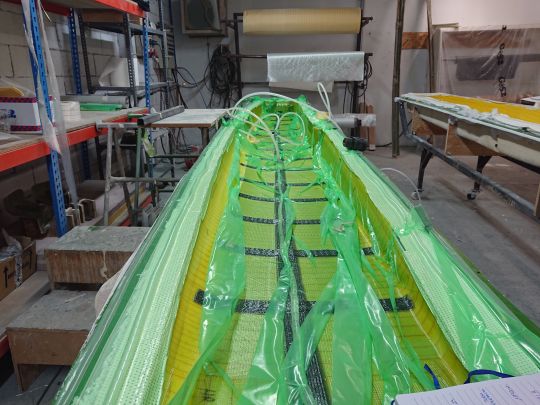
While the shipyard has chosen to abandon rotational molding for weight reasons, it prefers to build its hulls in fiberglass rather than carbon. This keeps the price down while keeping the boat less sensitive to shocks. It can thus be kept by a private yachtsman or a sailing club without worrying about excessive maintenance and protection.
Optimized aluminum appendages
A key element for the Befoil 16 Sport flying boat program is the choice of appendages. As with its first boat, the manufacturer decided to keep aluminum foils and rudders. The lower sensitivity of metal to shocks and abrasion gives it a better durability than carbon for amateur use, especially on the beach. Titanium parts are nevertheless machined for the junction of the vertical and horizontal foil profiles. A carbon version of the appendages is available as an option.
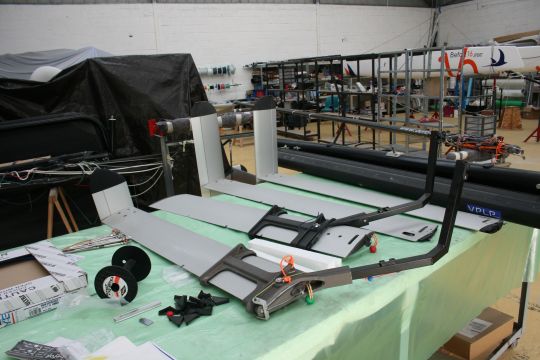
We are still thinking about optimizing the profiles and weight of the appendages, which is important for a 16-foot catamaran. "Today, we have three aluminum dies specially designed for the boat, one for the vertical parts, one for the fixed part of the foil and one for the flaps. We are working on a new die for the rudders" explains Charles de Lisle, technical manager. All the developments can be adapted to existing boats.
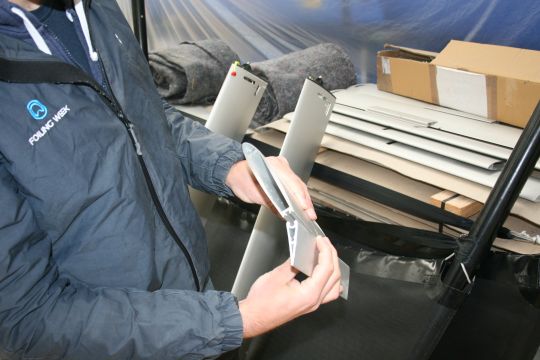
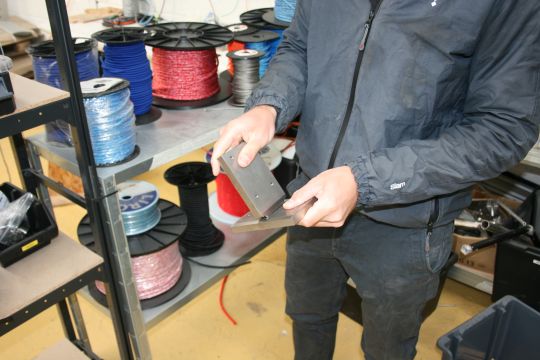
Easy storage and assembly
Aluminum has also been used in other areas of the boat. The rigging is also made of an aluminum mast and boom. Only the bowsprit, without martingale, is made of carbon to hold the efforts of the gennaker. The beams, still in aluminum, are bolted. "We imposed the constraint of being able to disassemble and reassemble the boat quickly. There is no gluing. This is also why the trampoline is not attached to the hull" explains Charles de Lisle. Once disassembled, the hulls can be easily stored for winter storage or transport. An attractive argument for sailing clubs and individuals.
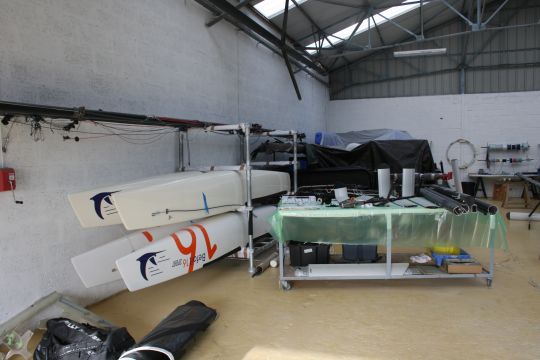
If Befoil's workshop in Lorient remains artisanal and continues to be used for development, the quality of finish of the boats is good. Using recognized suppliers, the catamarans seem ready for the acceleration of the production with the launching of the series.

 /
/ 